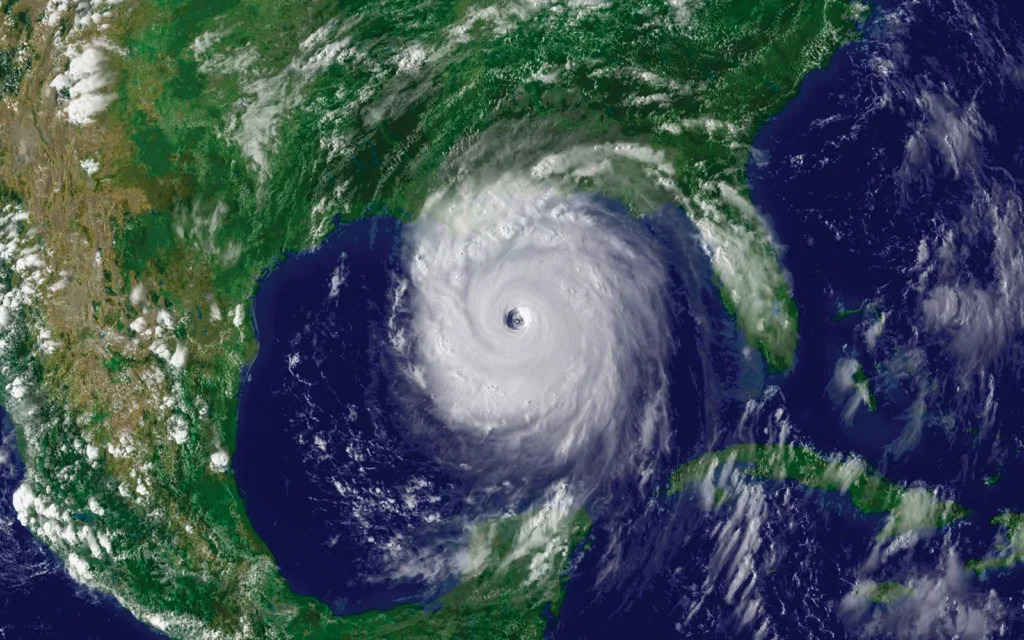Hurricane Katrina was one of the most devastating natural disasters to ever strike the United States. The storm began as a tropical depression on August 23, 2005, and quickly intensified into a Category 5 hurricane over the warm waters of the Gulf of Mexico. With top winds of 175 mph (282 km/h), Katrina was the largest and third-strongest hurricane ever recorded to make landfall in the US.
Although the storm weakened slightly as it neared the coast, it was still a powerful Category 3 hurricane when it made landfall near Buras-Triumph, Louisiana, on August 29, 2005. The storm surge that accompanied Katrina was catastrophic, breaching the levees in New Orleans and flooding much of the city. The flooding caused by the storm surge and subsequent levee failures was responsible for most of the fatalities and damage associated with Hurricane Katrina.
Despite the devastation caused by Hurricane Katrina, there has been some debate over whether the storm was truly a Category 5 hurricane. The Saffir-Simpson Hurricane Wind Scale, which is used to rank hurricanes based on their wind speed, defines a Category 5 hurricane as having sustained winds of 157 mph (252 km/h) or higher.
While Hurricane Katrina did have sustained winds of up to 175 mph (282 km/h) at its peak, some experts have argued that the storm was not technically a Category 5 hurricane at landfall. This is becase the storm had weakened slightly by the time it made landfall, with sustained winds of around 125 mph (201 km/h) and gusts up to 160 mph (257 km/h).
However, it is important to note that the damage and devastation caused by Hurricane Katrina were not solely the result of wind speed. The storm surge and flooding that followed the hurricane were responsible for many of the fatalities and much of the damage. In fact, the storm surge caused by Hurricane Katrina is considered to be one of the highest ever recorded in the US, with some areas experiencing surges of up to 28 feet (8.5 meters).
While there may be some debate over whether Hurricane Katrina was technically a Category 5 hurricane at landfall, there is no denying the scale of the devastation and loss of life that the storm caused. Hurricane Katrina serves as a reminder of the power of nature and the importance of being prepared for natural disasters.
Was Hurricane Katrina A Cat 4 Or 5?
Hurricane Katrina was initially a Category 5 storm, which is the highest level on the Saffir-Simpson Hurricane Wind Scale. It reached maximum sustained winds of 175 mph (282 km/h) while it was over the Gulf of Mexico before weakening slightly to a Category 4 storm with sustained winds of 145 mph (233 km/h) when it made landfall near the Louisiana-Mississippi border on August 29, 2005. The storm caused widespread destruction and was responsible for over 1,800 deaths and billions of dollars in damages.

Was Katrina A Cat 5 When It Hit New Orleans?
Hurricane Katrina was a Category 5 hurricane when it formed in the Gulf of Mexico and reached its peak intensity with maximum sustained winds of 175 mph. However, by the time it made landfall in New Orleans on August 29, 2005, it had weakened to a Category 3 hurricane with sustained winds of 125 mph. Even though the winds were not as strong as when it was a Category 5 hurricane, the storm surge and heavy rainfall caused significant damage to the levees in New Orleans, leading to catastrophic flooding and loss of life.
Was Katrina A 3 Or 5?
Hurricane Katrina was initially classified as a Category 3 hurricane as it made landfall in Florida on August 25, 2005. However, as it moved towards the Gulf of Mexico, it rapidly intensified to a Category 5 hurricane on August 28 with maximum sustained winds of 175 mph. It weakened slightly befre making landfall in Louisiana on August 29, as a still-devastating Category 4 hurricane with winds of 145 mph. The storm surge caused widespread flooding and levee failures in New Orleans, leading to catastrophic damage and loss of life. So, to answer the question, Hurricane Katrina was both a Category 3 and a Category 5 hurricane at different points in its trajectory.
Has There Ever Been A Cat 5 Hurricane?
There have been Cat 5 hurricanes. According to NOAA, there have been 37 recorded Atlantic hurricanes since 1924 that have reached Category 5 wind speeds at some point in their lifetime. Out of these storms, only one, Lorenzo in 2019, did not make landfall. However, only four of these storms maintained Category 5 winds as they came ashore in the mainland U.S.
Conclusion
Hurricane Katrina was indeed a Category 5 hurricane, which is the highest level on the Saffir-Simpson Hurricane Wind Scale. While it weakened to a Category 3 before making landfall in New Orleans, the storm still caused catastrophic damage to the city and surrounding areas. It is important to note that only a small percentage of hurricanes ever reach Category 5 status, and those that do are capable of causing widespread devastation. Hurricane Katrina serves as a reminder of the importance of disaster preparedness and the need for resilient infrastructure to protect against the impacts of extreme weather events.
